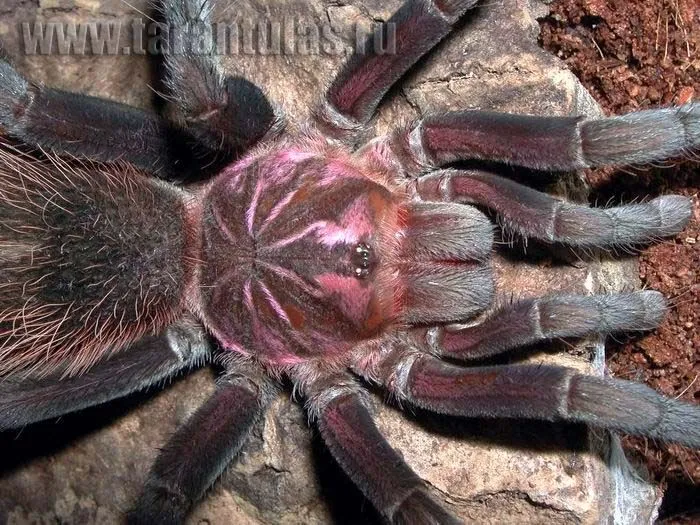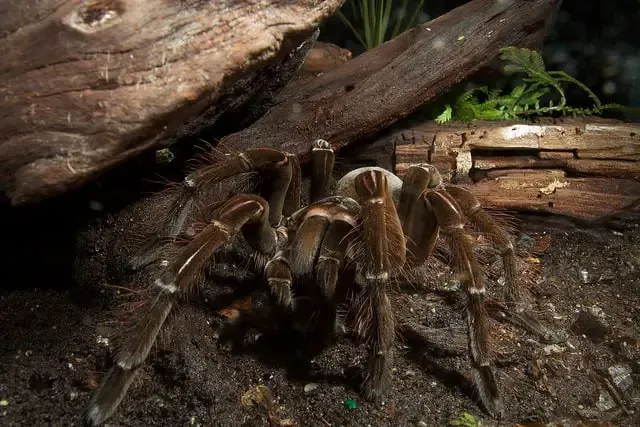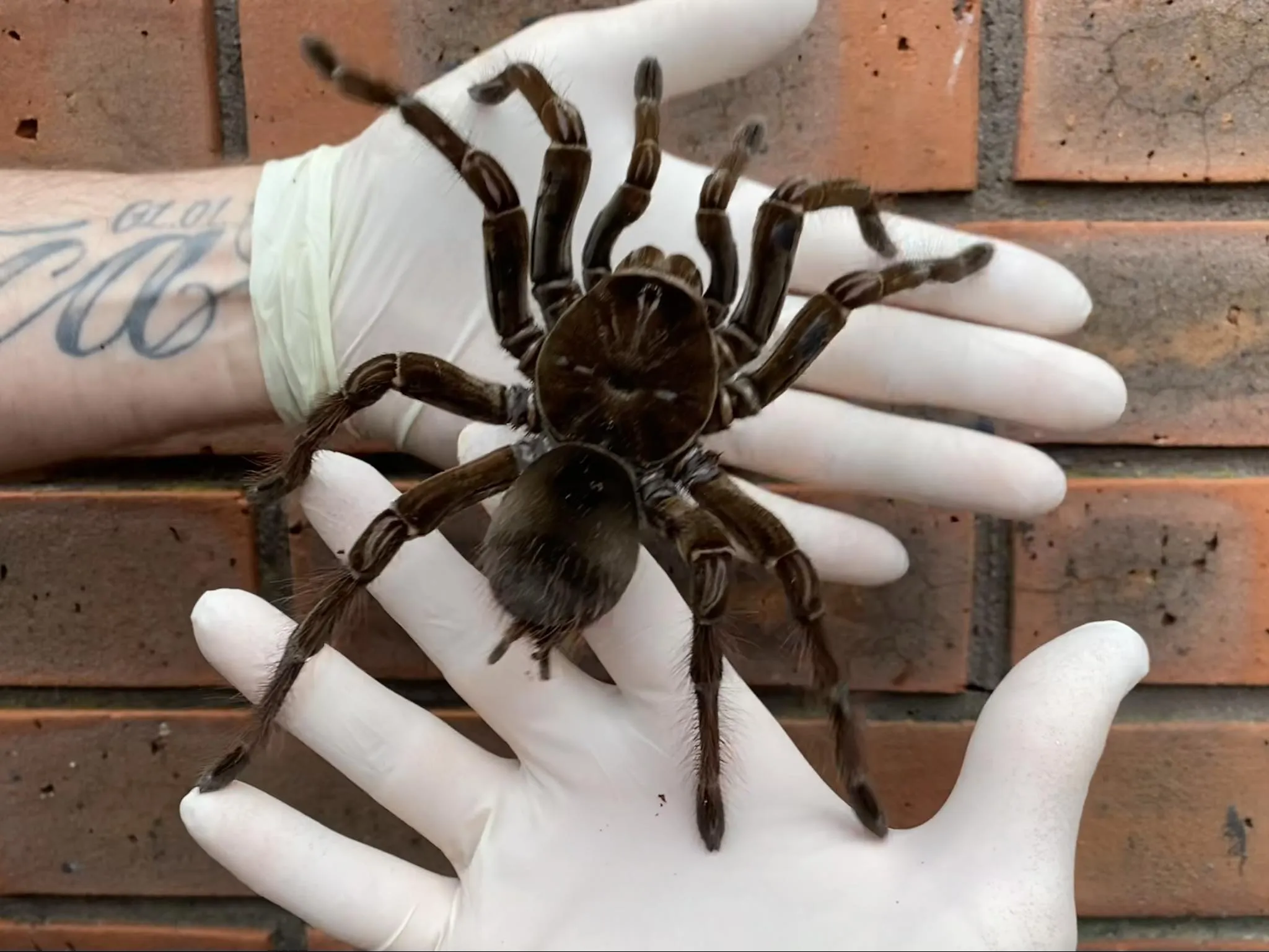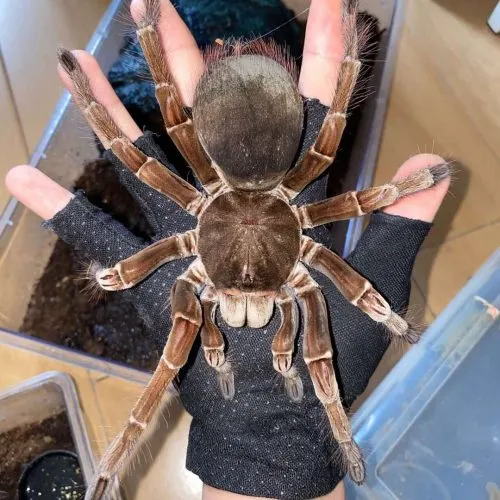What is a Goliath Bird Eating Tarantula?
The Goliath Bird Eating Tarantula (Theraphosa blondi) is one of the largest spider species in the world, captivating enthusiasts with its impressive size and unique characteristics. Originating from the rainforests of South America, this arachnid is a true marvel of nature. Despite its name, it rarely consumes birds in the wild, primarily feeding on insects, amphibians, and occasionally small mammals. Owning a Goliath Tarantula is a significant commitment, requiring careful planning and a deep understanding of their needs. Their size and defensive capabilities demand responsible ownership, making them an exciting, yet challenging, pet for experienced keepers.
Appearance and Characteristics
Goliath Bird Eating Tarantulas boast a striking appearance, instantly recognizable due to their massive size and hairy legs. Their bodies are covered in dense hairs, often reddish-brown or tan in color, providing a unique texture. They have large fangs, used for injecting venom into their prey. These fangs, along with their overall size, contribute to their formidable presence. Their bodies can range in color from a dark brown to a lighter tan. As they grow, they undergo molting, shedding their exoskeleton to allow for further growth. The process of molting reveals a fresh, vibrant appearance, making each molt a captivating experience for owners.
Size and Lifespan

These tarantulas are giants in the spider world. Females can reach leg spans of up to 12 inches or more, while males are slightly smaller. Their body length can be up to 4 inches. Their lifespan is another remarkable aspect, with females often living for 15 to 25 years or even longer under optimal conditions. Males, however, have a much shorter lifespan, typically living for 3 to 6 years. This difference in longevity is crucial to consider when acquiring one. Careful attention to their care will ensure a healthy life.
Where to Buy Goliath Bird Eating Tarantulas in the UK
Finding a Goliath Bird Eating Tarantula for sale in the UK requires careful research and selection of a reputable source. It is essential to prioritize the health and ethical treatment of these animals, opting for suppliers who prioritize their welfare. The following sections highlight key aspects to consider when searching for a Goliath Bird Eating Tarantula for sale in the UK to ensure you find a healthy and responsibly sourced specimen.
Reputable Breeders and Suppliers
When searching for Goliath Bird Eating Tarantulas for sale in the UK, the first step is to identify reputable breeders and suppliers. Look for breeders with experience and a proven track record, often indicated by positive reviews and testimonials. They should be knowledgeable about the species and committed to responsible breeding practices. These breeders prioritize the health of their tarantulas, often providing detailed information about their care and origin. Online forums and reptile enthusiast groups can provide valuable recommendations. Avoid purchasing from sources that seem unprofessional or lack transparency regarding the tarantulas’ origin and health.
Online vs. Local Pet Shops

The decision to purchase a Goliath Bird Eating Tarantula online or from a local pet shop depends on individual preferences and priorities. Online retailers often offer a wider selection and may have competitive prices. However, it is crucial to research the seller thoroughly and confirm their reputation and shipping practices. Local pet shops allow for a hands-on experience, enabling you to assess the tarantula’s health and behavior before purchasing. However, the selection may be limited, and prices may be slightly higher. Consider the convenience, customer service, and guarantees offered by each option, balancing these factors based on your needs.
Factors to Consider Before Buying
Before acquiring a Goliath Bird Eating Tarantula in the UK, several critical factors must be carefully considered to ensure a successful and ethical ownership experience. From understanding legal requirements to evaluating the associated costs and preparing the appropriate habitat, this section will assist you in making an informed decision. Responsible ownership starts with thorough preparation, taking into account all aspects of their care and long-term requirements.
Legality and Regulations
Before purchasing a Goliath Bird Eating Tarantula, confirm the legality of owning one in your specific location within the UK. While these tarantulas are not generally subject to strict regulations, some local authorities may have specific requirements. Research local laws and regulations to ensure compliance, including any necessary permits or registration. Always prioritize ethical ownership, which involves respecting the animal’s welfare and adhering to all applicable legal guidelines. If unsure, consult with local authorities or experienced keepers to verify legal compliance before acquiring the tarantula. Failure to comply could lead to penalties.
Cost and Pricing

The cost of a Goliath Bird Eating Tarantula varies depending on factors like the size, age, and the breeder or supplier. Expect to pay a significant amount for a healthy specimen, recognizing this is an investment in a long-term pet. Factor in additional expenses, including the enclosure, substrate, heating, and feeding costs. Ongoing costs include food, substrate replacement, and potential veterinary care. Compare prices from various sources, but prioritize the health and origin of the tarantula over price. Ensure you can comfortably afford the initial and ongoing costs before making a commitment.
Preparing for Your Goliath Bird Eating Tarantula
Before bringing your Goliath Bird Eating Tarantula home, proper preparation is essential. This includes setting up a suitable enclosure, creating the right environmental conditions, and ensuring you have everything ready to provide excellent care. By creating an optimal habitat, you will promote the tarantula’s well-being and reduce the risk of health issues. Proper preparation ensures you are ready to provide the care it needs.
Setting up the Enclosure
The enclosure is the most important element to consider. A large, secure enclosure is essential, with dimensions that allow for movement and proper temperature gradients. A glass terrarium or a custom-built enclosure with a secure lid is recommended. Ventilation is crucial to maintain air quality and prevent mold growth. Ensure the lid is escape-proof, as these tarantulas are strong and can push open loose lids. The size of the enclosure should be appropriate for the tarantula’s size. A juvenile will require a smaller enclosure than a full-grown adult, to prevent stress. Provide hiding places, such as cork bark or artificial hides, where the tarantula can retreat.
Substrate and Habitat

The substrate should be deep enough for burrowing, as these tarantulas like to dig. A mixture of coco fiber, peat moss, and vermiculite works well, as it retains humidity and supports burrowing. Ensure the substrate is clean and free of any chemicals. The depth should be at least 6-8 inches for adults. Provide water. The habitat should also include a water dish and some decorations. A water dish should always be available and easily accessible. Regularly change the substrate and remove any uneaten food or waste to maintain a clean and healthy environment. The habitat should closely mimic the natural environment to reduce stress.
Temperature and Humidity
Maintaining the right temperature and humidity levels is critical for the health of your Goliath Bird Eating Tarantula. The ideal temperature range is 75-85°F (24-29°C), using a heat mat or a ceramic heat emitter. Avoid using heat lamps, as they can dry out the enclosure and pose a burn risk. Humidity levels should be kept between 70-80%, achievable by misting the enclosure. Use a hygrometer to monitor humidity and adjust as necessary. Proper ventilation is important to prevent mold growth. Too much humidity, and too little, can cause serious issues for the tarantula.
Feeding Your Goliath Tarantula
Feeding your Goliath Bird Eating Tarantula correctly is crucial for their health and well-being. A balanced diet, appropriate feeding frequency, and safe handling practices are essential. This section will provide detailed guidelines for feeding your tarantula and ensure its long, healthy life.
Diet and Nutrition

The diet of a Goliath Bird Eating Tarantula should consist primarily of insects. Crickets, mealworms, and roaches are excellent choices, and they can be supplemented with other insects such as silkworms or locusts. The size of the prey should be appropriate for the tarantula’s size, offering smaller prey items for juveniles and larger ones for adults. Offer a variety of insects to ensure a balanced diet. Never feed wild-caught insects, as they may carry parasites or pesticides. Consider dusting the insects with a calcium and vitamin supplement to provide essential nutrients.
Feeding Frequency
Feeding frequency varies depending on the tarantula’s age and size. Juveniles should be fed more frequently, such as every other day, while adults can be fed every 1-2 weeks. Observe your tarantula’s eating habits and adjust the frequency accordingly. Remove any uneaten prey within 24 hours to prevent mold growth and stress on the tarantula. It is normal for tarantulas to refuse food, especially during molting or when they are full. Make sure water is always available.
Handling and Safety
Handling a Goliath Bird Eating Tarantula should be done with caution, as they have potent venom and can inflict a painful bite. Due to their size and temperament, handling is not always recommended and should be approached with respect. Prioritizing the safety of both the owner and the tarantula is essential. Understanding potential risks and taking preventive measures will minimize any incidents.
Handling Precautions

Handling a Goliath Bird Eating Tarantula is not generally recommended, particularly for beginners. However, if handling is necessary, approach it cautiously. Avoid handling the tarantula unless absolutely necessary, such as for health checks or enclosure maintenance. If you must handle the tarantula, do so in a safe environment, such as close to the ground or over a soft surface, to reduce the risk of injury if it falls. Always wash your hands before and after handling to prevent the transfer of any substances. Keep your movements slow and deliberate, as quick motions can startle the tarantula.
Identifying Potential Risks
Goliath Bird Eating Tarantulas have a number of defense mechanisms, and you must understand these when considering them. Bites are painful and can cause localized pain, swelling, and muscle cramps. They also have urticating hairs, which can cause severe skin irritation if they come into contact. Always wear gloves and eye protection when working in or around the enclosure to avoid exposure to these hairs. If bitten, seek medical attention immediately, and if you experience skin irritation, wash the area with soap and water, and avoid scratching. Learn to identify and respect the tarantula’s warning signs, such as a defensive posture.
Common Health Issues and Care
Goliath Bird Eating Tarantulas, like all animals, can be susceptible to certain health issues. Understanding common problems and knowing how to provide proper care will help ensure your tarantula remains healthy and lives a long, comfortable life. Recognizing the signs of illness and taking preventative measures are critical steps for responsible tarantula ownership.
Recognizing Signs of Illness
Be observant of your tarantula’s behavior and appearance. Signs of illness include loss of appetite, lethargy, unusual posture, and any changes in the abdomen. Look for signs of parasites or infections. If you notice any unusual symptoms, consult with a veterinarian experienced in treating exotic animals. If the tarantula is having difficulty molting, this could indicate a problem with humidity or nutritional deficiencies. Rapid weight loss is also a cause for concern. Act quickly if anything is amiss.
Preventative Measures
Preventative measures are crucial to maintain your Goliath Bird Eating Tarantula’s health. Maintain optimal environmental conditions (temperature and humidity), provide a balanced diet, and regularly clean the enclosure. Ensure the water source is always clean. Regular monitoring for any signs of illness is very important. Quarantine new tarantulas or those that are sick, from healthy specimens to prevent the spread of diseases or parasites. By following these practices, you can significantly minimize the risk of health issues and provide a healthy environment.
Conclusion
Owning a Goliath Bird Eating Tarantula is a rewarding experience, provided you are fully prepared for the responsibility. From finding a reputable breeder in the UK to setting up the ideal habitat and understanding their care, this guide has covered the key aspects of responsible ownership. Remember to prioritize the tarantula’s well-being by providing a secure environment, a proper diet, and regular care. With proper preparation, a Goliath Bird Eating Tarantula can become a fascinating addition to your home.
